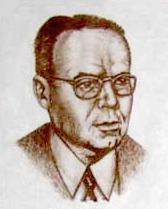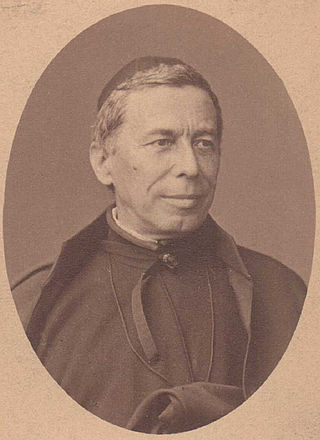
Joseph Hooton Taylor Jr. is an American astrophysicist and Nobel Prize laureate in Physics for his discovery with Russell Alan Hulse of a "new type of pulsar, a discovery that has opened up new possibilities for the study of gravitation."

Otto Struve was a Russian-American astronomer of Baltic German origins. In Russian, his name is sometimes given as Otto Lyudvigovich Struve ; however, he spent most of his life and his entire scientific career in the United States. Otto was the descendant of famous astronomers of the Struve family; he was the son of Ludwig Struve, grandson of Otto Wilhelm von Struve and great-grandson of Friedrich Georg Wilhelm von Struve. He was also the nephew of Karl Hermann Struve.

Hermann Carl Vogel was a German astrophysicist. He was born in Leipzig, Kingdom of Saxony. From 1882 to 1907 he was director of the Astrophysical Observatory, Potsdam. He made extensive discoveries using spectral analysis of the stars.

Sherburne Wesley Burnham was an American astronomer.

George Ellery Hale was an American astrophysicist, best known for his discovery of magnetic fields in sunspots, and as the leader or key figure in the planning or construction of several world-leading telescopes; namely, the 40-inch refracting telescope at Yerkes Observatory, 60-inch Hale reflecting telescope at Mount Wilson Observatory, 100-inch Hooker reflecting telescope at Mount Wilson, and the 200-inch Hale reflecting telescope at Palomar Observatory. He played a key role in the foundation of the International Union for Cooperation in Solar Research and the National Research Council, and in developing the California Institute of Technology into a leading research university.
Joel Stebbins was an American astronomer who pioneered photoelectric photometry in astronomy. He was director of the University of Illinois Observatory from 1903 to 1922 where he performed innovative work with the selenium cell. In 1922 he became director of the Washburn Observatory at the University of Wisconsin–Madison where he remained until 1948. After 1948, Stebbins continued his research at Lick Observatory until his final retirement in 1958.

Angelo Secchi was an Italian Catholic priest, astronomer from the Italian region of Emilia. He was director of the observatory at the Pontifical Gregorian University for 28 years. He was a pioneer in astronomical spectroscopy, and was one of the first scientists to state authoritatively that the Sun is a star.

John Alfred Brashear was an American astronomer and instrument builder.

The Vatican Observatory is an astronomical research and educational institution supported by the Holy See. Originally based in the Roman College of Rome, the Observatory is now headquartered in Castel Gandolfo, Italy and operates a telescope at the Mount Graham International Observatory in the United States.
The Astronomical Observatory of Belogradchik or Belogradchik Observatory is an astronomical observatory owned and operated by the Institute of Astronomy of the Bulgarian Academy of Sciences. It is located near the town of Belogradchik in northwestern Bulgaria, at the foot of the Western Balkan Mountains. The other observatory operated by the same institute is the Rozhen Observatory.

Saint Ignatius' College Riverview is an Australian independent single-sex primary and secondary day and boarding school for boys located in Riverview, a small suburb located on the Lane Cove River on the Lower North Shore of Sydney, New South Wales.

The University of Illinois Astronomical Observatory, located at 901 S. Mathews Avenue in Urbana, Illinois, on the campus of the University of Illinois Urbana–Champaign, was built in 1896, and was designed by Charles A. Gunn. It was listed on the National Register of Historic Places on November 6, 1986, and on December 20, 1989, was designated a National Historic Landmark.
Nathaniel Pigott (1725–1804) was an English astronomer, noted for his observations of eclipses, a transit of Venus and a transit of Mercury, and comets. He became a Fellow of the Royal Society on 16 January 1772, a foreign member of the Imperial Academy at Brussels in 1773, and a correspondent of the French Academy of Sciences in 1776.

Joan George Erardus Gijsbertus Voûte was a Dutch astronomer.

Macarthur Astronomy Forum is a monthly public forum organised by Macarthur Astronomical Society, providing leading national and international professional astronomers with a platform to address the Forum on topics of astronomical interest; also providing members of the Society and the general public with opportunities to learn and ask questions.

The Gregorian Tower or Tower of the Winds is a square tower and early modern observatory located above the Gallery of Maps, which connects the Villa Belvedere with the Apostolic Palace in Vatican City. The tower was built between 1578 and 1580 to a design by the Bolognese architect Ottaviano Mascherino mainly to promote the study of astronomy for the Gregorian Calendar Reform which was commissioned by Pope Gregory XIII and promulgated in 1582. It was then also known as the Tower of Winds. The tower was also called "Specola Astronomica Vaticana", a reference to the Vatican Observatory. Four stages of progressive development have occurred since it was first established. The tower was an edifice of great value for astronomical observations made using a sundial as they provided essential confirmation of the need to reform the Julian calendar.
Gerald Kron was an American astronomer who was one of the pioneers of high-precision photometry with photoelectric instrumentation. He discovered the first starspot and made the first photometric observation of a stellar flare.

W Crucis is a single-lined eclipsing variable star system in the constellation Crux. It has a spectral class of F8/G1Ia/abe indicating a yellow supergiant with emission lines in its spectrum.
The O'Connell effect is an asymmetry in the photometric light curve of certain close eclipsing binary stars. It was named after the astronomer Daniel Joseph Kelly O'Connell, SJ of Riverview College in New South Wales who in 1951 studied this phenomenon and distinguished it from the so-called periastron effect described by earlier authors, as it does not necessarily appear near the periastron, when tidal effects and an increase in mutual radiation may cause an increase in luminosity.

RT Persei is a variable star system in the northern constellation of Perseus, abbreviated RT Per. It is an eclipsing binary system with an orbital period of 0.84940032 d (20.386 h). At peak brightness the system has an apparent visual magnitude of 10.46, which is too faint to be viewed with the naked eye. During the eclipse of the primary this decreases to magnitude 11.74, then to magnitude 10.67 with the secondary eclipse. The distance to this system is approximately 628 light years based on parallax measurements. It is drifting closer with a heliocentric radial velocity of about −12 km/s.














